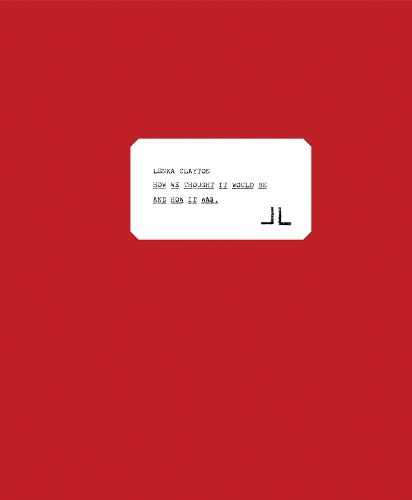Readings Newsletter
Become a Readings Member to make your shopping experience even easier.
Sign in or sign up for free!
You’re not far away from qualifying for FREE standard shipping within Australia
You’ve qualified for FREE standard shipping within Australia
The cart is loading…






Clayton's poetic, intricate drawings made on a typewriter capture glimpses of life at the beginning of the Covid pandemic
Since 2012, Lenka Clayton (born 1977) has (mis)used the typewriter as a drawing tool. To this date, she has made over 500 typewriter illustrations by using only the letter and punctuation keys on a standard mechanical typewriter. How We Thought It Would Be and How It Was presents 23 of these drawings, executed on a 1957 portable Smith-Corona Skyriter on antique, letter-size typewriter paper. Each drawing carries physical traces of the making process, including folds that enable the paper to move in all directions through the carriage. The subjects are all drawn from direct observation of daily life Clayton experienced during the early weeks of the pandemic in 2020, including her grandma's thumb on the camera during a Zoom conversation, empty supermarket shelves and the remnants of tea towels that were hastily cut up to make homemade masks.
$9.00 standard shipping within Australia
FREE standard shipping within Australia for orders over $100.00
Express & International shipping calculated at checkout
Clayton's poetic, intricate drawings made on a typewriter capture glimpses of life at the beginning of the Covid pandemic
Since 2012, Lenka Clayton (born 1977) has (mis)used the typewriter as a drawing tool. To this date, she has made over 500 typewriter illustrations by using only the letter and punctuation keys on a standard mechanical typewriter. How We Thought It Would Be and How It Was presents 23 of these drawings, executed on a 1957 portable Smith-Corona Skyriter on antique, letter-size typewriter paper. Each drawing carries physical traces of the making process, including folds that enable the paper to move in all directions through the carriage. The subjects are all drawn from direct observation of daily life Clayton experienced during the early weeks of the pandemic in 2020, including her grandma's thumb on the camera during a Zoom conversation, empty supermarket shelves and the remnants of tea towels that were hastily cut up to make homemade masks.